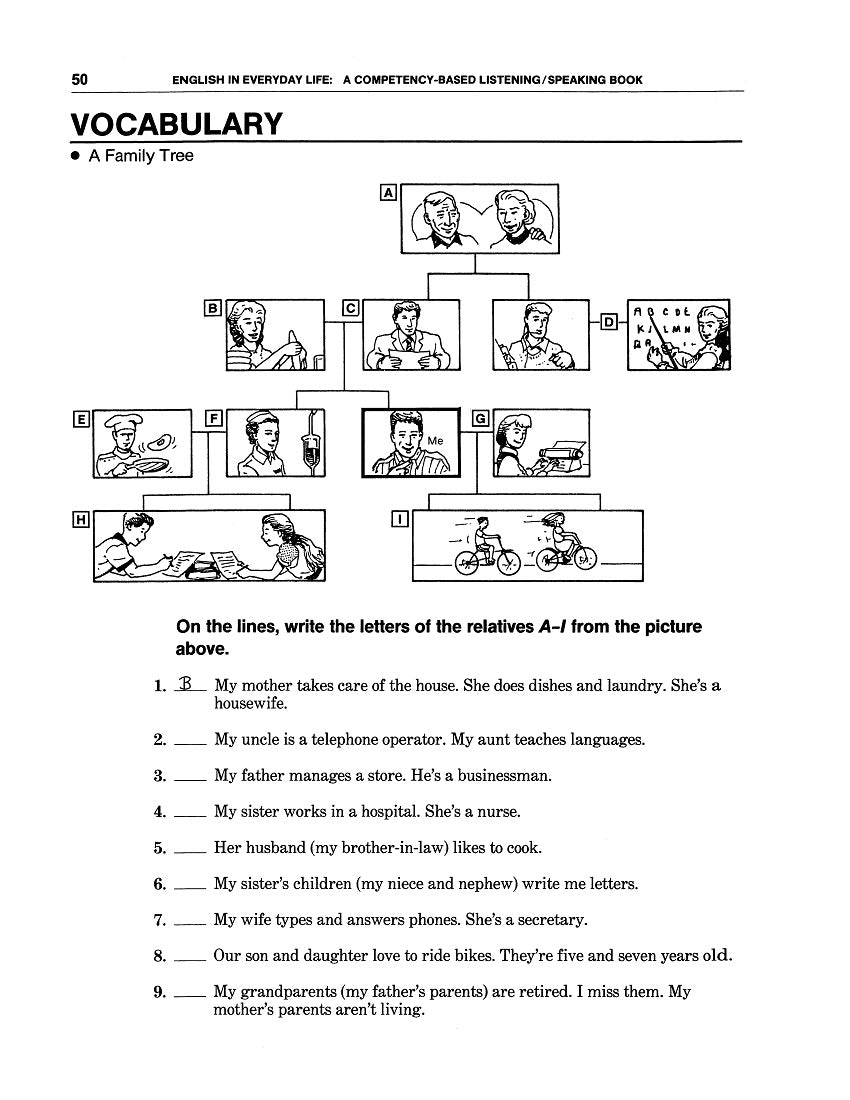Work/Life English
E-05.05 Progress with Oral-Skills & Strategies by Understanding & Making Small Talk About People
E-05.05 Progress with Oral-Skills & Strategies by Understanding & Making Small Talk About People
English in Everyday Life: The Family
WorkLife English: Competency-Based Listening/Speaking, Book 2 Chapter 5.
Tapescript
11 + 2 = 13 pp
Who It’s For: (Teachers & Helpers of) Learners Moving Beyond Beginning Levels Getting Comfortable with Vocabulary, Better Listening, Pronunciation, & Communication Activities That Improve Listening / Speaking Abilities
Why It’s Useful: Having conversed about other everyday topics, users of E-05.05 (Chapter 5: the Family) can now apply their developing Oral Skills to talk about themselves & others. What comes up first is illustrations of family members on a “tree” to match with their regular activities. It’s followed by communication about finding housing for such a large family. Diction items contrasting potentially confusing Initial Consonants like / l r d t th / may be fun to work with because they seem to contain “alliteration.” Audio about relatives—and what they regularly do—prepares learners to exchange info themselves and others. And finally, participants simulate telephone exchanges in which they request or supply information and give or take messages.
What You’ll Do:
[1] The Chapter 5 Opener informs text users that the Competencies they’re about to acquire are “Asking & Telling About Relatives,” “Using the Telephone for Info,” “Describing Kinds of Families.” The Grammar they’re going to bolster involves the (Third-Person Singular) Simple-Present; Infinitives after Common Verbs; Frequency Words; Indirect Objects. Vocabulary matches Sentence Subjects to Predicates.
[2] Whoever listens to Part One Audio gets to hear about (the problems) of typical family members living together—and then demonstrate comprehension. Part Two / Pronunciation material gives imitators a chance to contrast sounds in isolation and in amusing sentences with stressed words indicated. Part Three / Listening & Speaking Skills has them transfer contextualized vocabulary from a Family Tree to blanks for content words. Then they discern unstressed function words such as there / they’re / their; he / him / his, etc. They circulate to get and give info about generations of relatives. And in Part Four, they interact in simulated telephone interactions as well as in discussions about Kinds of Families in various cultures.
[3] As usual, text users can consult highlighted language in the attached AudioScript pages if necessary—or for reinforcement of the correlation between the sound aural speech and the look of written text. In case they’re of interest, you / they can a get a four-page Answer Key for Text Exercises in Download E-05.11—and/or an 11-page collection of Pronunciation Supplements in E-05.12.
Couldn't load pickup availability










